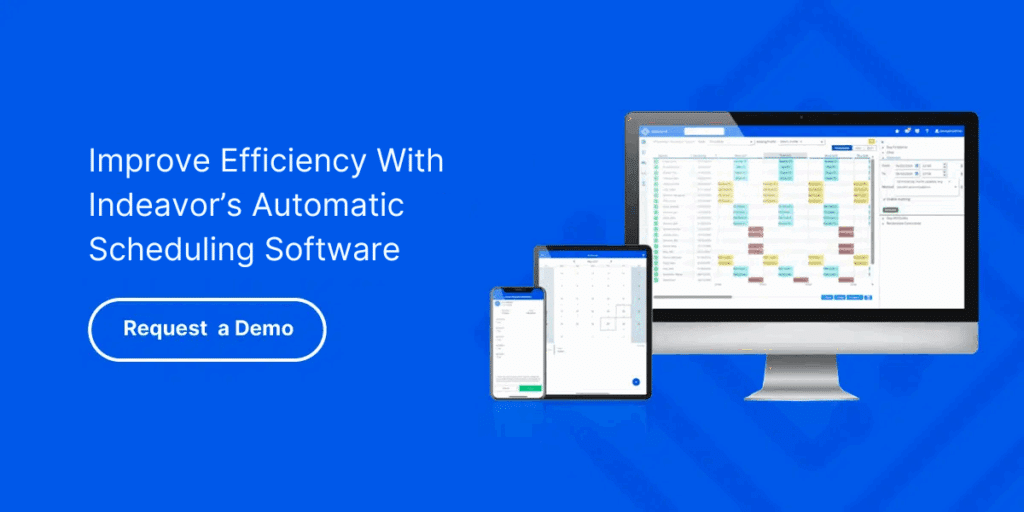Creating and managing a reliable police officer schedule is one of the most important tasks for any law enforcement agency. A well-designed schedule ensures that shifts are covered 24/7, officers avoid burnout, and the department remains compliant with labor laws and union agreements.
However, balancing all these factors while maintaining continuous coverage can be a challenge. In this article, we’ll explore effective ways to improve your police officer schedules without compromising coverage, backed by best practices and modern employee scheduling technology.
Common Types of Police Officer Schedules
Police departments use a variety of scheduling models tailored to their operational needs, staffing levels, and community demands. Understanding the common types of police officer shift schedule models and how they affect the work schedule of a police officer can help departments choose or improve their police officer schedule for better coverage and officer well-being.
- 8-Hour Shifts: Officers work three shifts a day—typically day, evening, and overnight—each lasting eight hours. This model offers a consistent daily rotation and can align well with traditional business hours, but it requires more frequent shift changes, which can complicate handoffs and increase scheduling complexity.
- 10-Hour Shifts (4/10 Schedule): Officers work four 10-hour shifts followed by three days off. This schedule provides longer rest periods and more days off, which can improve morale and reduce fatigue. However, the longer shifts may be more physically demanding, and coverage must be carefully planned to avoid gaps, especially during peak demand times.
- 12-Hour Shifts: This model divides the day into two longer shifts—typically day and night—each lasting 12 hours. It reduces the number of shift changes and can simplify scheduling but requires managing longer work hours that may increase fatigue risk. Departments often pair this with rotating days off to balance workload.
- Panama Schedule: A more complex rotation involving a repeating cycle of days on and off, designed to ensure equitable distribution of weekends and holidays off. It often combines a mix of 8-, 10-, and 12-hour shifts. While it promotes fairness, it requires detailed planning and constant communication to maintain coverage.
- Pitman Schedule: This schedule features a 4-day workweek followed by 4 days off, often with 12-hour shifts. It is structured to provide regular time off and predictable patterns but can be challenging to manage during holidays or special events when additional coverage is needed.
- Dupont Schedule: A 28-day cycle involving 12-hour shifts with blocks of working days followed by multiple days off, including weekends. It balances long shifts with extended rest but is complex to implement and requires close management to avoid coverage gaps during transition days.
Each of these police officer schedule types offers unique benefits but comes with challenges that require careful planning to maintain consistent schedule coverage and ensure officer well-being.

Key Challenges in Managing Police Officer’s Schedules
A police officer schedule can be difficult to manage due to many factors. Last-minute call-offs and sudden shift vacancies can leave critical gaps in coverage. Without flexible options for shift swaps, these gaps may remain unfilled, increasing risk and stress.
Manual scheduling processes often lead to errors, including overlapping shifts or unbalanced workloads. Additionally, many departments struggle with limited visibility into officer certifications, overtime limits, and union contract constraints, which can result in unintentional rule violations or officer fatigue.
Meeting compliance requirements while maintaining operational readiness requires more than just experience, it demands tools and strategies that address these challenges head-on. Failing to comply can lead to legal consequences, grievances, or loss of accreditation, making proactive compliance management a critical part of police offic schedule planning.
What “Improvement” Looks Like
Improving a police officer schedule means creating a system that reduces manual interventions while ensuring full shift coverage. It means having data-driven insight to balance workloads, prevent fatigue, and meet demand patterns without overstaffing or understaffing.
A better police officer schedule offers officers predictability, enabling them to plan their lives with fewer last-minute changes. It provides clear visibility into leave requests and availability so that management can avoid coverage conflicts. Ultimately, improvement supports employee engagement by reducing burnout and ensuring compliance with labor laws and union agreements.
Strategies to Improve Without Sacrificing Coverage
Improving a police officer schedule requires more than just filling shifts. It demands a smarter approach that balances operational needs with officer well-being and compliance. The following strategies help departments strengthen coverage, reduce administrative burden, and build more resilient schedules.
Automated Scheduling
Using automated scheduling software transforms how a schedule is created and maintained. Automation reduces guesswork and administrative burden by generating optimized schedules based on preset rules and constraints. This ensures fair distribution of shifts while respecting work hours, rest periods, and certifications.
Scheduling Visibility
For larger departments with multiple precincts, centralizing scheduling visibility helps prevent over-reliance on specific teams or individuals. A unified view allows managers to identify staffing shortages across locations and deploy resources more efficiently, enhancing overall coverage.
Mobile Access & Self-Service
Modern scheduling solutions offer mobile apps that empower officers to view their schedules, request time off, and trade shifts without contacting dispatch. This self-service functionality reduces manual coordination and increases schedule flexibility, helping fill gaps faster and maintain coverage.
Absence Management
Unplanned absences are a major disruptor to even the most well-designed schedule. When officers call off unexpectedly or submit last-minute leave requests, departments often scramble to find qualified replacements. Without an absence management system that tracks in real time and integrates with the schedule, coverage gaps and compliance issues are almost inevitable.
Labor Demand Planning
Police departments can benefit from aligning schedules with data on crime trends, seasonal fluctuations, and historical demand. Demand forecasting enables planners to allocate resources where and when they are most needed, ensuring the right officers cover the right shifts to maintain public safety.
Fatigue Management & Compliance
Managing officer fatigue is essential for safety and legal compliance. Real-time monitoring of overtime hours and rest periods helps supervisors prevent excessive workloads and potential violations. This proactive approach supports police officer schedules, well-being, and department readiness.

The Role of Indeavor in Schedule Optimization
Indeavor offers a comprehensive workforce management platform designed to improve the police officer schedule with automation, flexibility, and compliance built in. Indeavor’s solution supports 24/7 coverage needs while simplifying complex scheduling rules and labor contracts.
With Indeavor, law enforcement agencies gain access to mobile self-service options, allowing officers to manage their schedules on the go. The platform’s compliance engine automatically enforces overtime limits, rest requirements, and union rules, reducing risk and administrative overhead.
Departments using Indeavor experience fewer scheduling conflicts and better workload balance, leading to improved morale and public safety. Indeavor’s real-time data insights give managers clear visibility into staffing levels, helping optimize resource allocation across shifts and precincts.
Your Next Step to Reliable Coverage
An effective police officer schedule is vital for maintaining public safety, reducing officer burnout, and meeting compliance demands. Improving your schedule involves adopting strategies that reduce manual work, increase flexibility, and leverage data to match staffing with demand.
Modern scheduling technology, like Indeavor’s platform, offers law enforcement agencies the tools needed to build reliable, balanced, and compliant schedules. By embracing automation and self-service, agencies can enhance coverage without compromising the well-being of their officers or the safety of their communities.
Learn how Indeavor can help your department transform its current police officer schedules and improve operational efficiency—contact us today for a demo.
About the Author
Claire Pieper is the Digital Marketing Specialist for Indeavor. In her role, she specializes in crafting strategic and engaging content, ensuring that customers are well-informed. Claire is dedicated to enhancing the customer experience and optimizing the user journey through Indeavor’s solutions. To learn more or get in touch, connect with Claire on LinkedIn.



